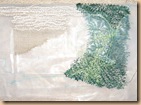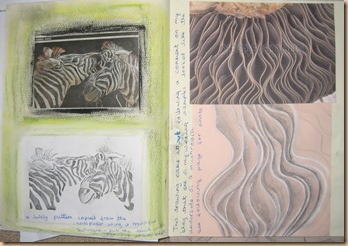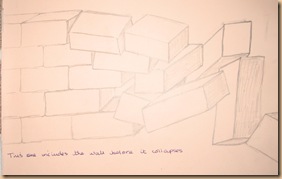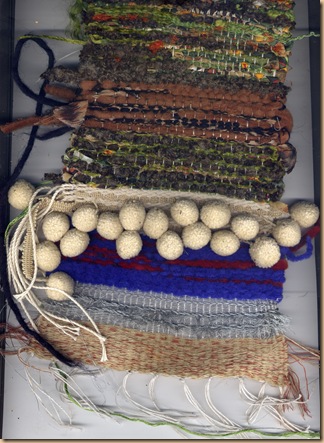Collecting Yarn and Exploring its Qualities
How lovely it would be to just go out and buy any yarn that took my fancy! It’s all very well to say, as stated in the last line of the brief ‘You don’t need to buy much of any one kind at this stage. One ball or hank is sufficient….’, but when one ball or hank is likely to cost £7 – 8, especially the more interesting ones, then this just isn’t possible for me. The other thing is that the choice is so wide these days, how on Earth would you pick one over another with out an end use in mind? I already collect found materials as suggested in paragraph 2, so rather than going shopping I am going to have a sort out and review of what I already have.
Ordinary sewing thread: Not to be underestimated! In creating a fabric using dissolvable stabilizer ordinary sewing thread could well form a base for further decoration. My collection is pathetic compared to what I had before moving back to England from Canada; I used to do a lot of dressmaking and had every colour under the sun, but I think I gave them away with the machines I sold. Sob, sob!

Machine Embroidery thread: These threads are usually polyester or rayon and have a sheen. They come in different weights and different brands vary enormously in texture and quality.

My ‘natural’ colour bag:
A variety of synthetic and natural wool:

Ribbons:

Natural fibres – dried grasses, seaweed, sheep wool and raffia:

6 Strand and perle embroidery thread:

Copper and brass wire:

A variety of upholstery trim:

Threads teased from fabrics and trim, my personal favourite:

Black:
I have ribbons, wool and upholstery trim


Interestingly, this small card came from a fishing equipment shop – they had a huge selection of yarns for tying flies, also feathers and animal hair.
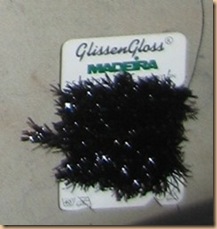
White: In the white bag there is quite a lot of lace; most of this was inherited from my mother. I like the wire spring which came from the spine of a notebook, and there are some cotton crochet yarns that have a lovely soft texture.

Red/pink: There are a few interesting things in this bag – the dusky pink variegated string and the mesh fruit bags have possibilities, and I love the pink bobbles.


Blue: Seems a bit sparse; blue is not one of my favourite colours, it always seems dull somehow. Dull as in boring that is, totally irrational of course. I do like the unspun wool in the left hand picture though.


Green: Not surprisingly, lots of green which is my favourite colour, whether fresh and crisp or dark and sludgy.




Purple: Not much here either, could perhaps be combined with the blue. The beads should really come out of the yarn bag. I am in the process of deciding how to store beads and other trim – I think plastic boxes.

Yellow/Gold: Some nice upholstery trim trim here, I think inherited from my mother’s stash.


Going through everything and recording it all has been a bit laborious, but useful in that has reminded me of what I have and where the gaps are.



